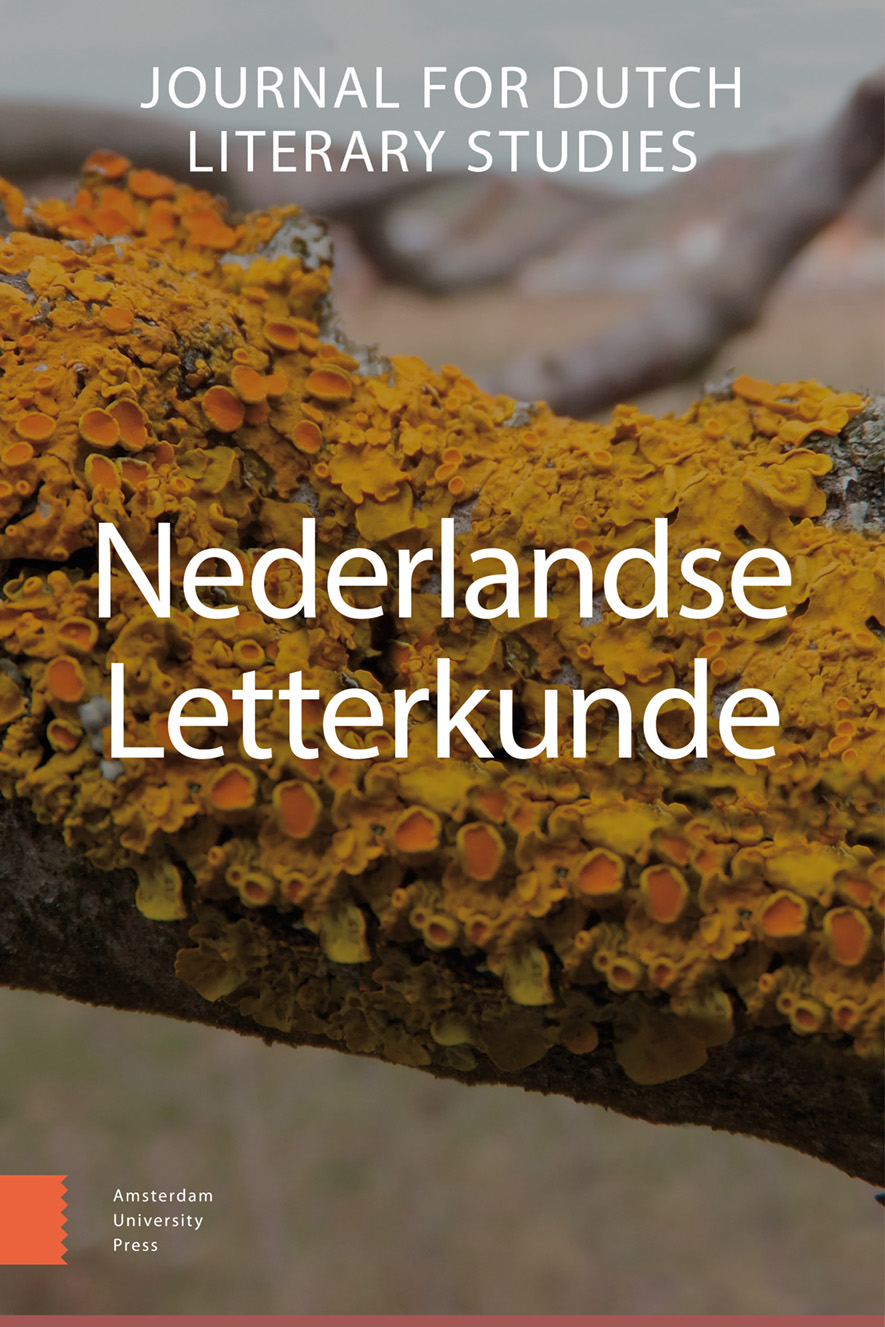- Home
- A-Z Publications
- Nederlandse Letterkunde
- Previous Issues
- Volume 16, Issue 1, 2011
Nederlandse Letterkunde - Volume 16, Issue 1, 2011
Volume 16, Issue 1, 2011
-
-
Tussen feit en fictie - Over Roelants wapenschild en een Zuid-Vlaams ontstaansmilieu voor de Middelnederlandse Fierabras
More LessAuthor: Mike KestemontIn 1860, Blommaert edited a manuscript fragment, found in the municipal archives of Bourbourg. The fragment offers a unique text witness of a Middle Dutch Carolingian epic, nowadays known as the Fierabras. Just before the fragment breaks off, the text discusses the shield (escutcheon) of the epical heroes Roland and his father Milon, bearing a red lion rampant on a field of gold. In 1937, Knuttel recognized in this heraldic detail an unambiguous allusion to the arms of the counts of Holland. Ever since, researchers believe the Bourbourg-text to have been written for the court of Holland, being one of the sparse testimonies of the interest the Dutch nobility in the north took in patronizing Middle Dutch chivalric literature. Our investigations, however, seem to counter this view. Members of the House of Gavere, in the south of Flanders, took on a variant of Roland’s shield by the end of the thirteenth century, claiming descendance from a comrade-in-arms of the epic hero. This legend took root in southern Flemish manuscript illumination around 1300. It will be demonstrated that southern Flanders – the region around Gavere – is an equally likely context for the composition of the Bourbourg-text, offering a much more plausible explanation for the southern Flemish dialect of its poet.
-
-
-
Dokter Jankowsky alias Sigmund Rascher - Nogmaals over referentialiteit in Louis Ferrons De keisnijder van Fichtenwald (1976)
More LessAuthor: Jan KonstThis article shows how Nazi doctor Sigmund Rascher (1909-1945) was the model for Doctor Jankowsky, the protagonist of Louis Ferron’s De keisnijder van Fichtenwald [The stone-cutter of Fichtenwald] (1976). This has interesting implications for the way in which the novel can be read. If you look at the last part of Ferron’s ‘Teutonic trilogy’ as a roman à clé, it is possible to discover a core meaning in this work – something which existing interpretations generally reject. The novel can be understood as the fictitious report of a notorious war criminal who tries to portray his own actions during the war years in as positive a light as possible. With an appeal to so-called Modest Actual Intentionalism, this reading of De keisnijder van Fichtenwald is seen in the light of statements which Ferron himself made on his novel. The article printed here is a direct continuation of an earlier article of mine on De keisnijder van Fichtenwald which was published in this magazine one and a half years ago.
-
-
-
(Con)tekst en commentaar - Zes wetenschappelijke publieksedities vergeleken
More LessAuthors: Britt Kennis & Matthijs de RidderBased on a critical review of six recently published scholarly editions, this article assesses the present state of scholarly editing, or more precisely of popular print editions. A recent trend seems to be a shift towards editions-as-narratives that focus on ‘telling the story behind the text’ by means of contextualisation. Despite the undeniable importance of generally accepted guidelines, the cases that are being discussed show that the practice of scholarly editing calls for an individual approach rather than a standardized approach. ‘The’ universally valid scholarly editing method simply does not exist. Therefore, the most convincing and ‘complete’ text editions are those that place the art of scholarly editing in a larger research context.
-
-
-
Recensies
More LessAuthors: Judith Keßler, Edwiv van Meerkerk, Ivo Nieuwenhuis & Paul ThiersHadewijch, Liederen. Ed. Veerle Fraeters & Frank Willaert, Groningen: Historische uitgeverij, 2010 (tweede druk). Met een reconstructie van de melodieën door Louis Peter Grijp. Met vier cd’s. – 455 p. ISBN 978-90-6554-478-0.; Hadewijch, Liefdesliederen. Vert. Jan Kuijper, met een nawoord door Rosita Steenbek, Amsterdam: Athenaeum – Polak & Van Gennep, 2010 – 155 p. ISBN 978-90-253-6730-5.; Klaartje Groot, Geliefd en gevreesd. Duits toneel in Nederland rond 1800. Hilversum: Verloren, 2000. ISBN 978 9087 0420 35.; Arend Fokke Simonsz, De moderne Helicon. Editie Lotte Jensen & Alan Moss. Nijmegen (Vantilt) 2010, 120 bladzijden, ISBN 9789460040573. Prijs € 13,50.; Piet J. Buijnsters, Geschiedenis van de Nederlandse bibliofilie. Boek- en prentverzamelaars 1750-2010, Nijmegen, Vantilt, 512 p, geïllustreerd met tal van foto’s. ISBN 978 94 6004 043 6. € 45
-
Volumes & issues
Most Read This Month


